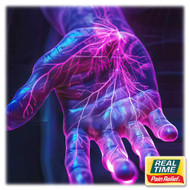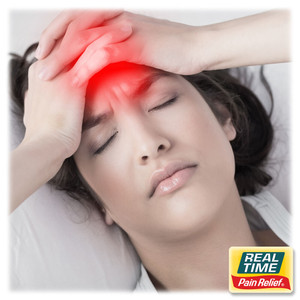Trapped Signals: Understanding and Easing Paresthesia from Nerve Entrapment
Posted by Dennis R. Escalera on 28th Apr 2025
What is Paresthesia?
Paresthesia refers to abnormal sensations such as tingling, numbness, burning, or a "pins and needles" feeling in the skin. While temporary paresthesia is common—like when your foot falls asleep—chronic paresthesia often signals nerve entrapment, where a nerve becomes compressed, irritated, or pinched along its pathway.
Nerve entrapment can affect many regions of the body and interfere with daily life, especially when paresthesia is persistent or accompanied by pain and weakness. In such cases, targeted treatment becomes essential for relief and functional recovery.
Common Causes of Nerve Entrapment
When a nerve is squeezed by surrounding tissues such as muscles, tendons, or bones, its ability to send signals properly is disrupted. This compression leads to unusual sensations, sometimes paired with localized pain, weakness, or coordination issues.
Common Nerve Entrapment Syndromes:
- Carpal Tunnel Syndrome (median nerve at the wrist)
- Cubital Tunnel Syndrome (ulnar nerve at the elbow)
- Tarsal Tunnel Syndrome (posterior tibial nerve at the ankle)
- Meralgia Paresthetica (lateral femoral cutaneous nerve in the thigh)
- Thoracic Outlet Syndrome (brachial plexus nerves in the shoulder)
- Radial Nerve Entrapment (at the forearm or upper arm)
Entrapments may result from:
- Repetitive movements or overuse
- Trauma or injury
- Poor posture or biomechanics
- Inflammation from surrounding tissues
- Obesity or diabetes
Recognizing the Symptoms
Paresthesia from nerve entrapment varies based on the nerve affected but often presents as:
- Tingling or prickling sensation
- Burning or cold-like feelings in the skin
- Numbness or reduced sensation
- Intermittent or constant discomfort
- Muscle weakness or cramping
- Radiating pain along the nerve's path
Symptoms often worsen with activity and may improve with rest, though in chronic cases, paresthesia may become constant.
Diagnosing Nerve Entrapment
A thorough diagnosis is essential to identify the location and cause of the nerve compression. Physicians may use:
- Physical exams to assess strength, reflexes, and range of motion
- Nerve conduction studies and electromyography (EMG) to evaluate nerve and muscle function
- Imaging such as MRI or ultrasound to visualize soft tissues and nerve compression
Identifying the exact nerve involved allows for targeted, effective treatment.
Treatment Options
The goal of treatment is to relieve pressure on the nerve, reduce inflammation, and restore function. Depending on severity, conservative or surgical approaches may be considered.
1. Physical Therapy
Stretching, strengthening, and postural training can reduce compression and improve nerve gliding.
2. Bracing or Splinting
Immobilizing the affected joint (e.g., wrist or elbow) during rest or sleep can reduce strain.
3. Oral Medications
Anti-inflammatory drugs (NSAIDs) may reduce swelling, while nerve pain medications such as gabapentin or amitriptyline can calm hypersensitive nerves.
4. Corticosteroid Injections
These are used in some cases to rapidly reduce inflammation around the nerve.
5. Surgery
Reserved for severe or non-responsive cases, surgical decompression physically removes the source of pressure on the nerve.
Topical Relief Creams with Nature’s Ingredients: A Supportive Strategy
For those with mild to moderate paresthesia—or as a complementary method for chronic symptoms—topical creams made with botanical components can help alleviate discomfort. These products provide fast, localized support and can be integrated into daily self-care routines.
? Arnica montana
Widely used for bruises and muscle trauma, arnica helps reduce inflammation and increase blood flow around the affected nerve.
❄️ Menthol
It stimulates cold receptors in the skin, offering cooling relief that can ease burning or tingling sensations while improving circulation.
? Garlic (Allium sativum) Extract
Rich in allicin, garlic may help reduce nerve inflammation and improve peripheral nerve function, particularly in diabetic neuropathy models.
? Chamomile (Matricaria recutita)
Known for its calming effects on skin and nerve tissues, chamomile may relieve irritation and promote nerve repair.
? Curcumin from Turmeric
Curcumin has anti-inflammatory and antioxidant properties that may support nerve healing and reduce oxidative stress.
? Witch Hazel
Witch Hazel can soothe inflamed skin and underlying tissues, potentially reducing irritation around compressed nerves.
Benefits of Topical Applications
Topical pain-relief formulations are designed to penetrate the skin barrier and reach nearby tissues—making them effective for localized nerve discomfort.
Advantages include:
- Non-systemic support with minimal side effects
- Fast-acting relief without drowsiness
- Direct application to areas of tingling, burning, or numbness
- Useful alongside other treatments like physical therapy or medication
Application Tips:
- Use 2–3 times daily, focusing on affected areas
- Massage gently to increase blood flow and absorption
- Wash hands after application if using menthol-based products
Self-Care and Prevention
Preventing or minimizing symptoms of paresthesia often involves lifestyle and ergonomic adjustments:
- Avoid repetitive strain by alternating tasks or using ergonomic tools
- Correct posture during computer work or lifting
- Stretch regularly and take breaks during extended activity
- Maintain a healthy weight and control underlying conditions like diabetes
- Wear protective gear if working in environments with vibration or compression
When to Seek Medical Help
While mild, occasional tingling may be harmless, chronic paresthesia—especially with pain or weakness—should be evaluated by a healthcare provider. Early treatment can prevent long-term nerve damage and improve quality of life.
Final Thoughts
Nerve entrapment syndromes are more than an inconvenience—they can limit mobility, function, and comfort. Addressing paresthesia with a blend of physical care, supportive therapies, and topical formulations made from nature’s ingredients offers a holistic approach to relief.
If you’re experiencing unusual skin sensations that don’t improve with rest, speak with a medical provider for a proper diagnosis and explore supportive care strategies that align with your health needs.





